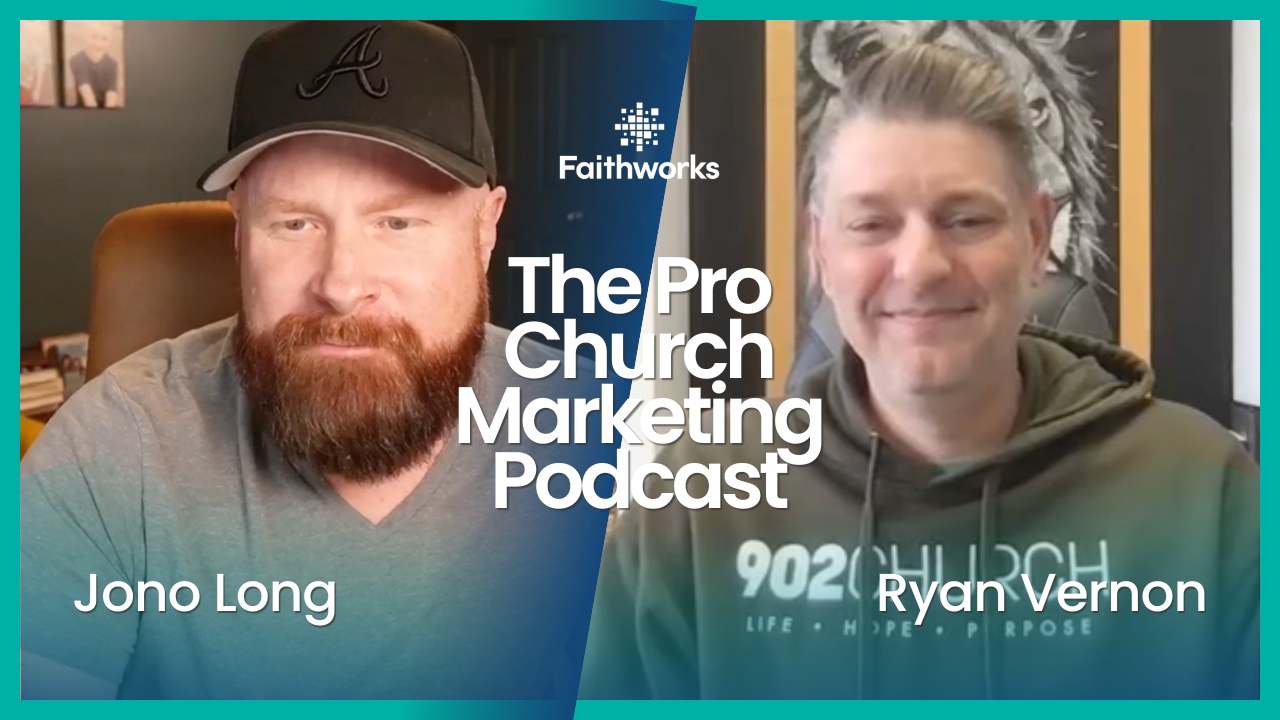Why Your Church Can’t Find Leaders (And What to Do About It)
It’s the same story in churches across the country. You ask pastors, “What’s your biggest struggle?” And more often than not, the answer is the same: leadership development. From small churches to megachurches, pastors are feeling the pressure — “I just don’t have enough leaders.”
The strange part? We live in the most content-rich leadership culture in history. Search “church leadership” on Amazon or YouTube, and you’ll be buried in books, sermons, and training videos. So what’s the disconnect?
According to leadership expert and Multiply Group founder Mac Lake, we don’t have a content problem—we have a process problem. In a recent conversation on the Pro Church Marketing Podcast, Mac dropped some serious wisdom that every pastor and ministry leader needs to hear. If your church is stuck, frustrated, or flat-out burned out from trying to raise up leaders, read on.
We Don’t Have a Content Problem—We Have a Process Problem
Mac has been in the trenches—planting churches, coaching pastors, and working alongside ministries of all sizes. One of the most shocking stats he shared? A survey conducted in both 2008 and 2018 showed the exact same thing: leadership development was still the #1 issue churches faced.
In other words, 10 years passed and nothing changed.
Why? Because churches have misunderstood what leadership development actually is.
“In America, we think, ‘If I said it, you got it.’ We think dumping information equals transformation.”
— Mac Lake
But real leadership development isn’t about downloading content into people’s heads. It’s about walking with them through a process that transforms their character, skillset, and capacity.
Common Mistakes Churches Make in Leadership Development
Here’s the hard truth: most churches are doing leadership placement, not leadership development.
Instead of building from the ground up, we’re hoping to recruit already-polished volunteers from other churches. Instead of developing a healthy leadership culture, we throw new volunteers into ministry after two weeks of shadowing and hope for the best.
Mac calls this “putting someone in the batting cage, throwing two pitches, and then sending them into a ballgame.” The result? Frustrated leaders. Bottlenecks. Burnout.
Another mistake: confusing readiness with willingness.
“We're looking for readiness, not willingness. And there’s a shortage in our pipelines because we never built a culture of leadership development yesterday.”
— Mac Lake
If we wait for perfect, fully-formed leaders to appear, we’ll be waiting forever. Instead, we need to spot potential, not polish.
What Jesus Modeled—and Why We’re Missing It
Let’s take a cue from the ultimate leadership developer: Jesus.
Mac broke down Jesus’ leadership process chronologically. For nearly 21 months, Jesus hung out with future disciples before appointing the 12. Once He did, He didn’t just dump knowledge on them. He apprenticed them intentionally—giving them both content and real-life ministry experience.
“He spent a disproportionate amount of time with a few to impact the many.”
— Mac Lake
And here’s the key: the 12 weren’t perfect. They still argued about who was the greatest. But Jesus saw potential. He saw what they could become—not just where they were.
In contrast, many modern churches are intimidated by church culture. We bend our methods to keep people happy, rather than following biblical principles. But Mac puts it plainly:
“Do you want to build your church around cultural norms or biblical principles?”
Building a Scalable Leadership Pipeline
So what’s the alternative? How do we actually build leaders?
It starts with a pipeline—a clearly defined structure that identifies where someone is, and what they need to grow to the next level. Mac outlines five key stages in the leadership pipeline:
- Lead Self – personal responsibility, spiritual maturity.
- Lead Others – small groups, teams, entry-level leadership.
- Lead Leaders – coaching, oversight of team leaders.
- Lead a Ministry/Department – directors, strategic leaders.
- Lead the Church – pastors, executive staff.
At each level, there should be clear competencies, character traits, and onboarding systems. This framework not only helps identify current leaders, but allows churches to measure the “depth chart” in every ministry area—just like a football team knows its backups.
Where to Start—Even If You’re Busy and Bi-Vocational
Here’s the encouraging part: this doesn’t require massive teams, software, or budgets.
“All it takes is picking two people and walking them through a process.”
— Mac Lake
Mac recommends starting with two current leaders who you trust. Walk them through his book Leading Others, a leadership development tool built for churches. Meet every other week. Talk through the competencies. Let them try. Then, challenge them to do the same with two new people the next semester.
This developer-to-developer model mirrors Jesus’ ministry and multiplies impact faster than hiring more staff.
Real-Life Example: From Small Group to Movement
Mac shared a story about his wife—a stay-at-home grandma—who started a women’s small group. After one semester, she picked three women to meet with every other week using Leading Others. By the next semester, those women launched their own groups. And she started the process again.
Now those three women are training their own future leaders. Just like that, 12 new small group leaders are born—not by accident, but through intentional development.
And that’s the secret sauce: simple, reproducible systems that start with relationship.
Final Thoughts: Stop Looking—Start Building
If your church is struggling to find leaders, don’t be discouraged. The problem isn’t your people. It’s not even your budget. The problem is that we haven’t been discipling people to lead like Jesus.
It’s time to make a shift.
✅ Stop looking for pre-packaged leaders.
✅ Start developing the willing.
✅ Move from “doers” to “developers.”
✅ And build a leadership culture that lasts.
Whether you’re a full-time pastor or bi-vocational leader, the path forward is clear: start small, start now, and stay consistent.
🔗 Resources Mentioned:
- Get the Free eBook: Rethinking Leadership Development
- Mac Lake on Instagram
- Learn more at MultiplyGroup.org

Latest Posts



© 2025 All Rights Reserved | Faithworks Marketing








